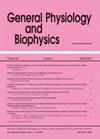Effects of novel mRNA-VEGF@USPIO nanoparticles on human brain microvascular endothelial cell injury
IF 1.3
4区 生物学
Q4 BIOCHEMISTRY & MOLECULAR BIOLOGY
引用次数: 0
Abstract
We investigated the effect of mRNA-VEGF@ultrasmall superparamagnetic iron oxide (USPIO) nanoparticles on the repair of human brain microvascular endothelial cell (HBMECs) injury and its related mechanisms. mRNA-VEGF@USPIO nanoparticles were designed, prepared, and characterized using NTA and UV spectrophotometry. Cell viability was determined using the CCK-8. Cells in the control, TNF-α, and mRNA-VEGF@USPIO groups were sequenced and the differentially expressed genes (DEGs) were identified. Finally, a functional analysis of the DEGs was performed. Both NTA and spectrophotometry results indicated that mRNA-VEGF@USPIO was successfully constructed. TNF-α significantly reduced cell viability and promoted apoptosis compared with the control group (p < 0.05), whereas mRNA-VEGF@USPIO nanoparticles reversed the changes caused by TNF-α. Via sequencing, 9063 DEGs were identified between the control and TNF-α groups, 9125 DEGs were identified between the control and mRNA-VEGF@USPIO groups, and 211 DEGs were identified between the TNF-α and mRNA-VEGF@USPIO groups. Additionally, 71 overlapping DEGs were identified in the three groups using Venn diagrams. These overlapping DEGs were mainly enriched in cytokine-cytokine receptor interactions and the TNF signaling pathway, NF-κB signaling pathway, and NOD-like receptor signaling pathway. This study shows that mRNA-VEGF@USPIO nanoparticles can repair HBMECs injury.新型mRNA-VEGF@USPIO纳米颗粒对人脑微血管内皮细胞损伤的影响
本文章由计算机程序翻译,如有差异,请以英文原文为准。
求助全文
约1分钟内获得全文
求助全文
来源期刊

General physiology and biophysics
生物-生化与分子生物学
CiteScore
2.70
自引率
0.00%
发文量
42
审稿时长
6-12 weeks
期刊介绍:
General Physiology and Biophysics is devoted to the publication of original research papers concerned with general physiology, biophysics and biochemistry at the cellular and molecular level and is published quarterly by the Institute of Molecular Physiology and Genetics, Slovak Academy of Sciences.
 求助内容:
求助内容: 应助结果提醒方式:
应助结果提醒方式:


